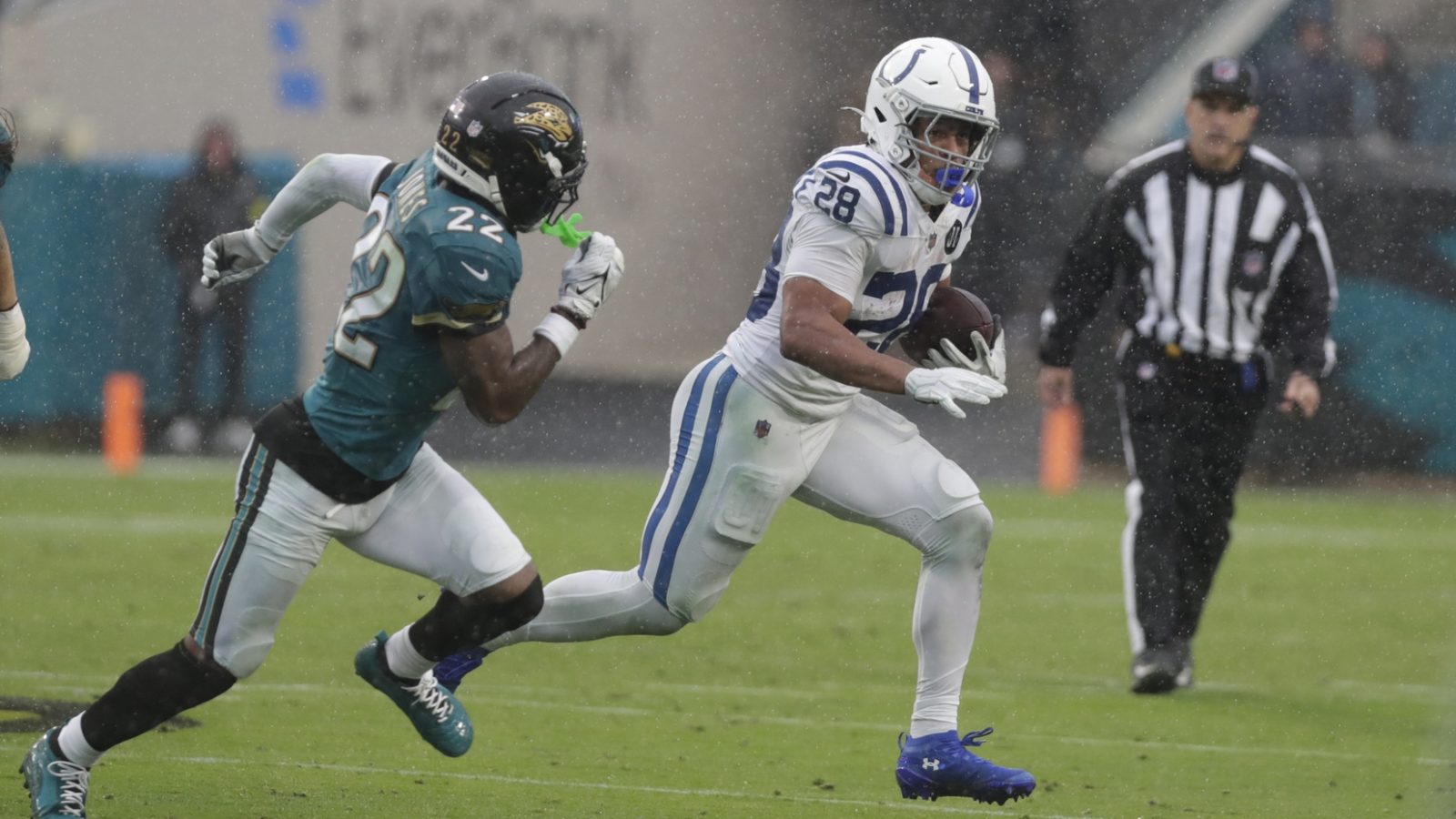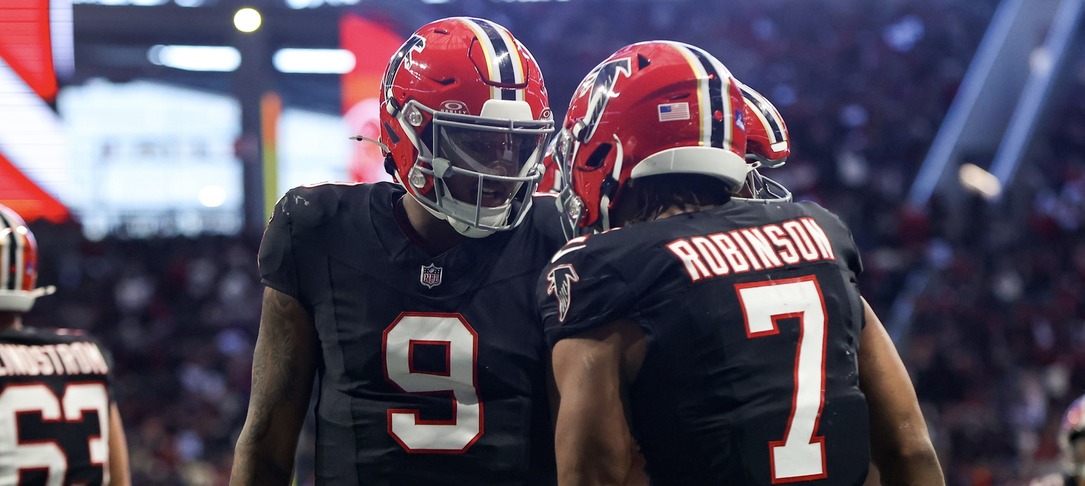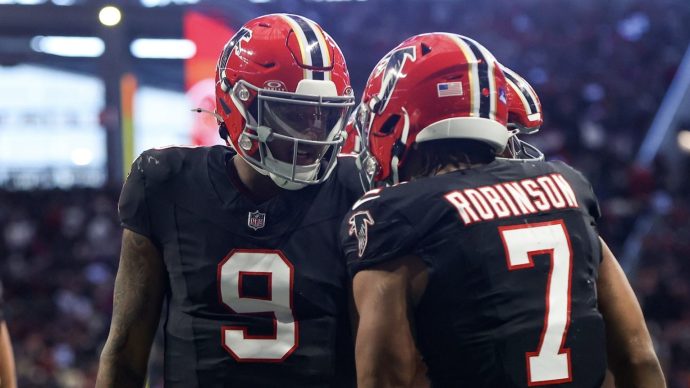Whether you are new to sports betting and daily fantasy sports or simply looking to improve your process, the amount of information and statistics available can be overwhelming. Everyone could use an NFL betting cheat sheet and strategy refresher!
Of course, we are familiar with the statistics that score fantasy points like yards and touchdowns, but there are other metrics and trends that can be predictive of future success and production.
Let’s dive into some of those other metrics that may not be as familiar.
Editor’s Note: Follow our NFL news hub for more FREE expert picks, props, and analysis throughout the entire 2025 season!
Top DFS Apps in All States


NFL Betting Cheat Sheet – Stats That Matter
Let’s dive into some very important statistics, terms, and trends to integrate into your routine when deciphering the best picks for DFS and sports betting.
You can find in our 2025 NFL futures article that many of these principles that matter can be applied to those types of picks.
PLAYING TIME
One of the most important factors in projecting production is how much a given player will actually be on the field.
The current state of NFL backfields involves the usage of multiple players to curb workload and injuries, meaning the days of the “workhorse” running back are mostly in the past.
Likewise, different personnel packages can lead to different receivers on the field at different times. Playing time metrics like snap share and route participation can be highly beneficial to our success in determining where the potential production lies.
For example, in Week 12 of the 2024 NFL season, Bucky Irving played 52% of the Buccaneers’ backfield snaps, compared to 49% for Rachaad White.
It was the first time all season Irving had outsnapped White when both backs were healthy, but it was a foreshadowing of the Bucs’ plans for the rest of the season. Over the next 7 weeks, Irving played 23 more snaps than White and led the Bucs’ backfield in fantasy points.
Wide receivers and tight ends can experience similar volatility in playing time.
Snap share can be useful for deciphering trends, but route participation is an even better metric for pass catchers.
A slot wide receiver like the Packers’ Jayden Reed only played on 63.7% of snaps in 2024, but he ran a route on 72.7% of pass plays.
This illustrates the Packers’ intended usage for him and demonstrates his heavy involvement in their passing attack, even if he is not on the field as much as other pass catchers.
We can use playing time trends like snap share and route participation to find players that may be undervalued or overvalued by the market, which can be useful in both player prop betting and daily fantasy sports.
TOUCHES AND OPPORTUNITY
Just being on the field isn’t enough to guarantee fantasy production.
Just as important as how often a player will be on the field, how often a given player will touch the ball can directly correlate to their fantasy production.
At the running back position, rushing attempts are the most obvious way to accumulate fantasy points.
The back that is on the field the most is usually the player who is touching the ball the most, but not always.
Rushing attempt share can further help determine the most valuable roles.
There are other factors like efficiency and red zone touches to discuss later, but generally, the highest volume of attempts is going to lead to the most fantasy production.
Receptions are the primary source of touches for wide receivers and tight ends, and they are an important piece of running back production as well.
Targets are an excellent metric to determine which players are most likely to rack up receptions, and target share can help determine how the volume is dispersed on a given team.
An important thing to remember is that not all targets come with the same value. ADOT (Average Depth of Target) is an important metric that can help determine in which area of the field a player is being targeted.
A low ADOT is not necessarily bad, as those targets are easier to convert. This is especially true if the low ADOT comes with high volume, like in the case of a wideout like Amon-Ra St. Brown.
Air yards is another metric that can help determine the value of targets and also identify potentially undervalued players.
The volatility of deep targets can lead to players with opportunities for big plays not yet realizing their potential.
SCORING CHANCES
This is one of the more exciting components of the NFL betting strategy cheat sheet.
Projecting touchdowns is one of the more volatile things in fantasy football, but they obviously carry extreme weight.
Rushing touchdowns can come from anywhere on the field, but they are most often scored from inside the 5-yard line.
Obviously, it makes sense to review who is getting those opportunities.
Of the top 10 rushing touchdown scorers in 2024, eight of them ranked in the top 10 in carries inside the 5-yard line.
James Cook tied for the NFL lead with 16 rushing touchdowns, yet he ranked just 21st in carries inside the 5-yard line. He would be considered a candidate to see significant touchdown regression in the upcoming campaign.
Receiving touchdowns more often come from deeper downfield, but end zone targets can still help determine players with ample opportunity to find paydirt.
Ja’Marr Chase led the league in both receiving touchdowns and end zone targets in 2024.
Terry McLaurin, Mike Evans, Justin Jefferson, and Tee Higgins all ranked top 10 in both categories.
As for the wide receivers who could see positive touchdown regression, Courtland Sutton and Marvin Harrison Jr. both ranked top four in end zone targets, but finished tied for 13th in receiving touchdowns.
EFFICIENCY
While volume and opportunity are the more reliable metrics and the best indicator of fantasy production, there are a few outliers that can be identified by using efficiency metrics like yards per carry and yards per route run.
Puka Nacua was the most efficient wide receiver in the 2024 season, with 3.57 yards per route run.
The Rams star is also a volume monster with a 29.9% target share, so he is easily identifiable as an elite fantasy asset.
A receiver like Marvin Mims, who managed just a 9.7% target share but finished fourth in yards per route run, was able to outperform his opportunity.
Mims finished as the WR77 in fantasy points per game despite ranking 98th in target share.
Volume is almost always going to trump efficiency, but there are some opportunities to identify undervalued players by looking at efficiency.
Featured Image Credit: Imagn






